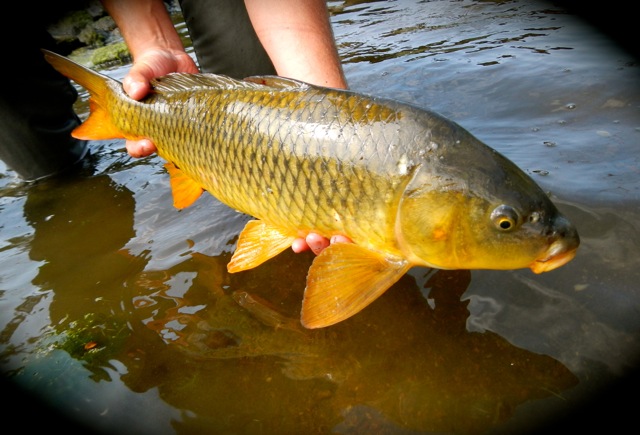
Cyprinus carpio
10 Things To Know About Fly Fishing For Carp On Denver’s South Platte River
If you have been following Trouts Fly Fishing or visited us here at the shop, you know that most of us here are unabashed carp junkies. Here is a quick list of things you should know about carp and the Denver South Platte River if you decide to take on this challenging species on the fly.
1) The Denver South Platte River is a section of the larger South Platte River Drainage that runs from Chatfield Reservoir through Downtown Denver and then northeast through Commerce City. From the Chatfield Dam, the river runs 30 miles virtually unobstructed. There is a wide variety of species that inhabit the South Platte and include common carp, mirror carp, grass carp, smallmouth bass, largemouth bass, rainbow trout, brown trout, walleye. The most prevalent species that you will find from a fly fishing perspective through most of this river is the common carp.
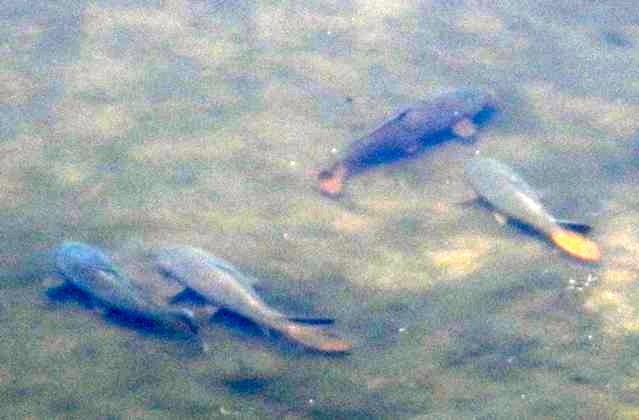
These common carp were found in low and clear water - note how you can more easily spot their tails
2) The Denver chapter of Trout Unlimited holds a yearly carp fishing tournament on the South Platte River. The official beats begin at Oxford Avenue and this is the furthest most south section of the river that is fished. To the North, the fishing boundary is just downstream from 120th Avenue located in the city of Brighton, Colorado. Carp can be found anywhere in the South Platte river below Chatfield Reservoir all the way out to Jackson Lake roughly 100 miles northwest.
3) The predominant natural food source for both the common and mirror carp are crayfish, worms, leeches, crustaceans, snails, various nymphs, and chironomids, algae and other vegetation.
.jpg)
This is a fairly big crayfish that was found living in the South Platte River
4) Carp are notoriously picky in this section of the river and will often inspect flies closely and reject imitation flies that they do not like. Carp are believed to have an excellent sense of smell for very specific food sources in the river - smells emitted by worms, crayfish and aquatic plants. Avoid touching flies after applying sun screen; rub your fly into the sand or mud before you present it to a fish; avoid scented glue or adhesives on your patterns.
5) In addition to their keen sense of smell, carp have an excellent sense of taste. The lining of their mouths have chemically sensitive cells that help determine if the food is the real deal or an imitation. When a fish eats your fly be ready to strip set your fly quickly. If you do not set quickly enough, a carp is likely to expel your fly.
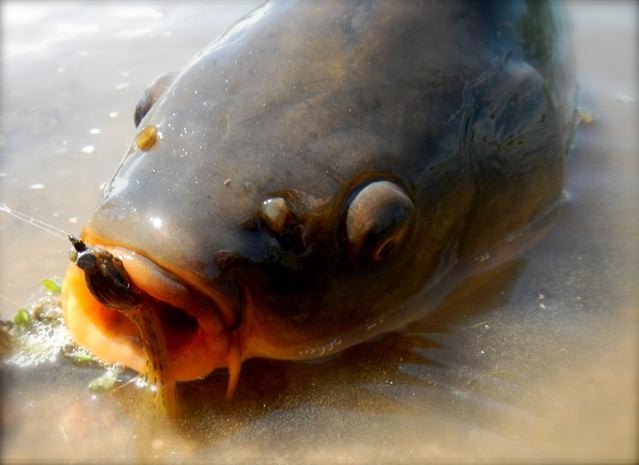
This fish wanted to eat... and we let him eat.
6) Carp have more sensitive sight than humans and they can see well in lower light levels. Use a stealthy approach when hunting carp; avoid bright clothes or fly line. Be aware of that larger tippets can have the tendency to spook carp.
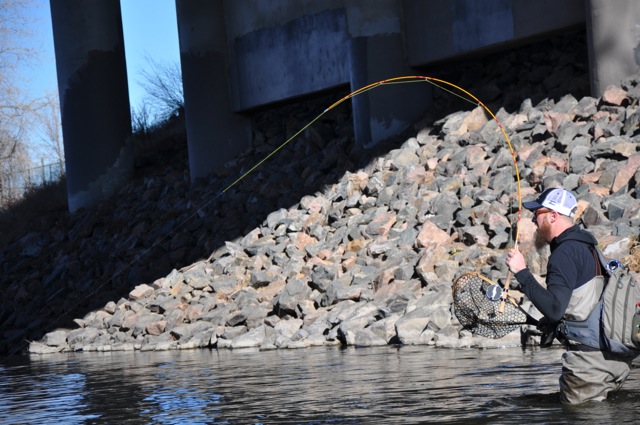
Rick Mikesell bending glass
7) Carp can range from 6-20 pounds in the Denver South Platte River. Some fish are even bigger. For new anglers we recommend a 7 or 8 wt medium to medium/fast action fly rod. This will help you control a fish more effectively when they are hooked. It will also minimize the risk of damaging a smaller fly rod. Right now I’m fishing with a Sage ONE 890-4 and in low water conditions I use a ONE 690-4.
.jpg)
This is what putting a Waterworks-Lamson Speedster to the test looks like - the fish on the other end of the line took me well into my fly line backing
8) Carp have the ability to pull fast and hard. We recommend using a reel with a sealed drag system with plenty of room for backing. For my eight wt. rod I’m fishing a Sage 4280 and for my six weight rod I’ve paired it with a Waterworks-Lamson Speedster.
9) For most situations when you are sight fishing for carp in the South Platte River, a weight forward floating line is most appropriate. One line that was specifically designed for carp fishing is the Rio Freshwater Carp Line. Carp can be leader and tippet shy – especially in areas of the rivers that are heavily pressured. We typically recommend 2X or 3X fluorocarbon leaders (7.5 or 9 ft).
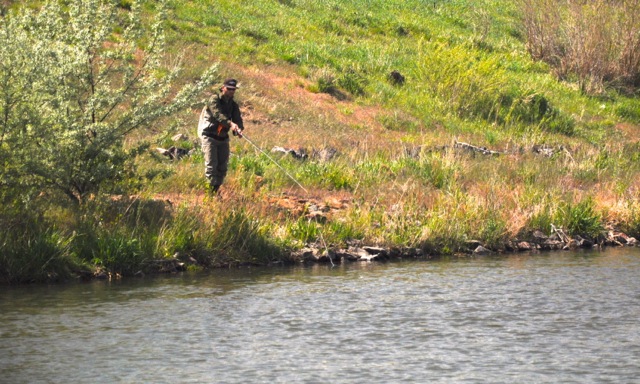
Using natural cover to "ambush" approaching fish is a solid tactic on the Denver South Platte River
10) Carp are tough to pattern – that is what makes them challenging and why we keep going back after them. When you go out to fish for carp, understand that the entire process of finding fish, approaching fish, making the right fly selection and presenting the fly are all equally important steps. Then, once you get a fish to eat your fly, hold on and have fun.
Another thing to note regarding the South Platte River is that itstill is in desperate need of help, protection, and restoration. Most people agree upon one thing: there is no reason that this river cannot be drastically improved and be a better resource tomorrow than it is today.
.jpg)
This FWX 7/8 was generously donated by Nautilus Reels as the fund raising Grand Prize at last year's Carp Slam
One organization that is helping out our home water is Denver Trout Unlimited. They are also sponsoring this year’s annual Carp Slam being held in September. If you want to learn more about how you can help out the South Platte River visit www.denvertu.org.
Stay tuned for part II of this series where we will talk more about fish behavior and tactics on the water as well as specific carp flies. If you have questions about carp fishing or the Denver South Platte River call the shop at 303.733.1434 or stop in! We are here to help.



.jpg)


.jpg)

.jpg)